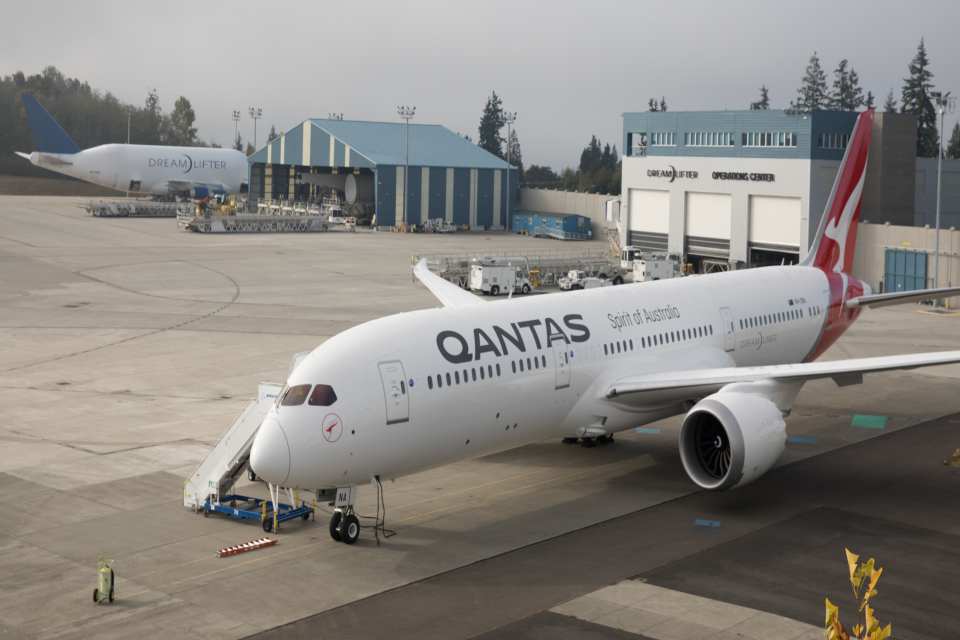Aviation
QANTAS SIGNS SECOND MAJOR SUSTAINABLE FUEL DEAL

- New deal to use almost 20 million litres of biofuels each year from 2025
- Will power flights from San Francisco and Los Angeles to Australia
- Calls to develop local sustainable fuels industry to help Australian aviation transition to net zero emissions
Qantas is expanding its use of sustainable aviation fuel (SAF) by tapping into supplies in California to help reduce carbon emissions on its flights from LA and San Francisco to Australia.
SAF produces up to 80 per cent less emissions than traditional jet kerosene and is compatible with existing aircraft. Airlines around the world are increasing their use of SAF, with demand outstripping supply in most jurisdictions.
US biofuels company Aemetis will supply almost 20 million litres of blended SAF each year for Qantas flights, starting in 2025.
Qantas Airways Airbus A380 returns to the skies
The sustainable fuel will be produced at Aemetis’ plant currently under development in Riverbank, California. It will come from certified feedstock from waste products that is then blended with normal jet fuel.
This is Qantas’ second major offshore purchase of SAF with flights from London using a blend of sustainable fuel since the start of this year.
World’s Largest Plane An 225 Burned down In Ukraine War
Qantas is pursuing a number of additional deals to add more SAF in the US and other international airports. The national carrier is aiming to be net carbon neutral by 2050 and will outline an interim target later this month.
The deal follows Qantas signing an agreement with oneworld partners last year to consider purchasing SAF from Aemetis for use out of Californian airports.
THE GULFSTREAM G700 SETS INTERNATIONAL CITY-PAIR SPEED RECORDS FOR THE FIRST TIME.
The Qantas Group has four pillars to support its target of net zero emissions by 2050:
- Sustainable aviation fuels – Working with governments and bioenergy providers on the development of a sustainable aviation fuel industry in Australia and international supply in key ports.
- Fleet modernisation – Investing in next generation and lower emission aircraft, which reduce fuel burn.
- Operational efficiency – Reducing single use plastics and waste to landfill as well as ongoing work to reduce fuel burn, including through smarter flight planning.
- Carbon offsets – Investing in high quality flagship Australian and International projects

Aviation
Boeing, Antonov to Collaborate on Defense Projects

– MOU represents Boeing’s commitment to work with Ukrainian industry
– Includes exploring opportunities for collaborating on in-country support of Unmanned Aerial Systems
A Memorandum of Understanding was signed today by Boeing and Antonov Company to investigate potential collaboration on defense-related projects.
“We’re happy to keep collaborating with the Antonov Company to help Ukraine’s economic development and expansion,” stated Ted Colbert, CEO and president of Boeing Defence, Space, & Security.
Airbus and the Antonov An-225: The Best Partnership:Click here
“This agreement demonstrates our ongoing efforts to find more opportunities to work with Ukrainian industry, which was underscored by our signing of the Ukrainian Defence Industry Compact earlier this year.”
The areas of potential collaboration identified in the agreement consist of training, logistical support and overhaul services for tactical Unmanned Aerial Systems utilized by the Ukrainian Armed Forces, which includes the ScanEagle. In addition, the companies will also explore opportunities for Antonov to provide engineering support to Boeing.
The six largest cargo aircraft ever built in the aviation industry:Click here
“A strong, innovative, and efficient defense industry is key to sustainable economic development and national security, and we are extremely excited to collaborate with Boeing,” said Ievhen Gavrylov, CEO of Antonov Company.
This agreement brings a whole new level of opportunity to implement the latest and most effective solutions – in addition to the possibility of future projects with Boeing in the aerospace and defense industry.”
-

 Travel1 week ago
Travel1 week agoAir India to Expand US Operations with Three New Routes After a Decade
-

 Travel2 weeks ago
Travel2 weeks agoWhy We Should Avoid These Stamps in a Passport
-

 Airlines1 month ago
Airlines1 month agoInvestigations Reveal Fake Chinese Titanium in Boeing and Airbus Jets
-

 Tech4 weeks ago
Tech4 weeks agoChina’s CATL Plans 1,800-Mile Electric Plane Launch by 2027
-

 Airport3 days ago
Airport3 days agoTop 10 Largest Airports in the World by Size
-

 Aerospace4 weeks ago
Aerospace4 weeks agoChina’s Fighter Jets Turn Wings into Autonomous Drones
-

 Airlines4 days ago
Airlines4 days agoAir India Rolls Out A350s for Delhi-New York JFK and Newark Routes
-

 Defence3 weeks ago
Defence3 weeks agoBoeing Enhances Chinook with New Engines and Block II Upgrades at $96 Million







